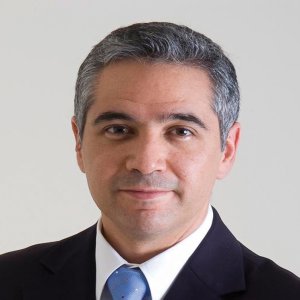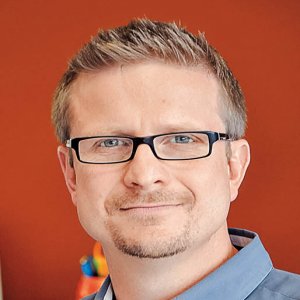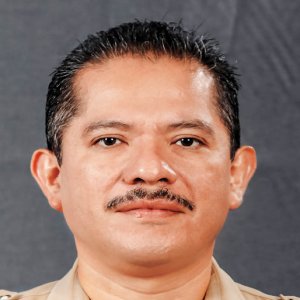Top Rail Company Invests Ahead of Atomotive Expansion

STORY INLINE POST
Q: How have you adapted your strategy to respond to the shift in automotive industry activity to the Bajio?
A: All the automotive factories in the Bajio region are very well-supplied by our services as well as our trucking partners, offering direct links to the US and all of Mexico’s major ports. We also work together with federal and state agencies that promote investment around Mexico. When these agencies hear of a potential new investment in a certain area of the country, they invite us to participate in the site selection. Companies often consider being located in two or three different states so meeting with keyservice providers such as Kansas City Southern de México (KCSM) helps to provide some clarity as to which area would suit them best. In terms of changing our strategy or expanding our coverage, we do sometimes talk with OEMs and manufacturers to discover the rail services they might require. The first concern of new arrivals is to find out which routes we operate, from a location near their plant site to Mexico City, to the border and within the US. We sit down with them to analyze our routes and to match these with any needs they might have. Another crucial factor is our capacity to move a certain volume of cars out of the factory and to move containers inside. As it stands, automotive makes up just under 20% of our business in Mexico, including auto parts and finished vehicles.
Q: Which role does intermodal transportation play in your activities?
A: This is a crucial component of our services, and we have kept investing to grow our intermodal capabilities over the years. We have three intermodal stations in Mexico, at Toluca, Nuevo Leon and San Luis Potosi, which allow us to provide better outgoing intermodal services. The automotive industry naturally receives vast amounts of auto parts, which are mostly shipped in containers via inter-modal services. In every logistic movement, both we and our customers require the utmost efficiency. Therefore, every journey is analyzed on that basis to see if only using rail is the best option, or whether it would be better to employ a combination of rail and truck, or even rail, truck and shipping. Q: How much do you need to partner up with specialized shipping or trucking firms to meet your intermodal needs? A: KCSM specializes specifically in rail, and this will always remain our core service. Therefore, we have agreements with trucking and shipping companies, since we do not own such companies. We purely dedicate ourselves to providing an efficient railway service. The permanence of our partnerships depends on the total number of movements that we foresee along a given route, as a one-time movement does not require such a business partnership. Unlike Ferromex, we have not found it necessary to begin our own automotive division in order to provide such services internally. We have different strategies and different ways of managing our businesses. KCSM is very efficient in the way we work with other services, without the need to own them or to establish a formal partnership with them.
Q: What should be set as government priorities in terms of infrastructure development?
A: KCSM has a firm commitment with the Mexican authorities to increase the country’s industrial potential and competitiveness. On the Pacific side, KCSM is working with the port of Lazaro Cardenas to ensure all inbound and outbound freight is expedited through the terminal to maximize asset optimization. Likewise, we are working with APM Terminals to design the rail access for its new terminal at Lazaro Cardenas, which represents an investment of almost US$1 billion and will double the port’s container handling capacity. On the Gulf of Mexico, we are expanding the rail infrastructure at the port of Veracruz to allow KCSM to connect directly. This expansion will be able to accommodate the forecasted growth of the automotive industry in terms of the numbers of finished vehicles that will pass through Veracruz. The port of Veracruz already handles 70% of the vehicles exported by sea from Mexico and KCSM has invested sufficiently to be able to accommodate any growth that comes on top of this. We are collaborating with the Intermodal Logistics Terminal of Hidalgo which, along with our own facility in Toluca, will handle much of the extra automotive movement coming out of the Bajio over the next few years. KCSM works closely with big rail users like the automotive industry to facilitate the connection to their sites, much to their benefit. We also work with AMPIP to spread awareness among automotive companies of the advantages they will draw from having rail access to their facilities.
Q: How can KCSM help the rail system in Mexico move more than 30% of all the cargo in the country?
A: We are helping to increase that percentage every day by convincing customers to move their freight by rail. Mexico will reach 35% in the next eight to ten years, which is a good target, considering that the US moves around 40% of its cargo by rail. The geographies of the two countries are obviously quite different, however. The large flat sections of the US make it much easier to run a railroad while this is made more expensive in Mexico by its mountainous terrain.
Q: To what extent are you lobbying the government to invest in expanding the country’s rail capacity?
A: We are lobbying the government while making a lot of direct investment ourselves. For 2014 alone, we have allocated US$143 million to invest in our own network. But as shown in the National Infrastructure Plan, the government has been making a large investment as well, including the International Bridge in Matamoros, and the by-passes of Celaya, Manzanillo, and other cities. Our competitors like Ferromex, Ferrosur and Ferrovalle are part of this process, while the building of new tracks and new routes could also see fresh competition arise. This scenario is providing the proper setting for public-private partnerships to thrive in the area of railway expansion and the development of general infrastructure. In terms of promoting the future of the railway industry in Mexico, all these companies and ourselves lobby the government through the Mexican Railway Association (AMF), of which I am the president this year.



















